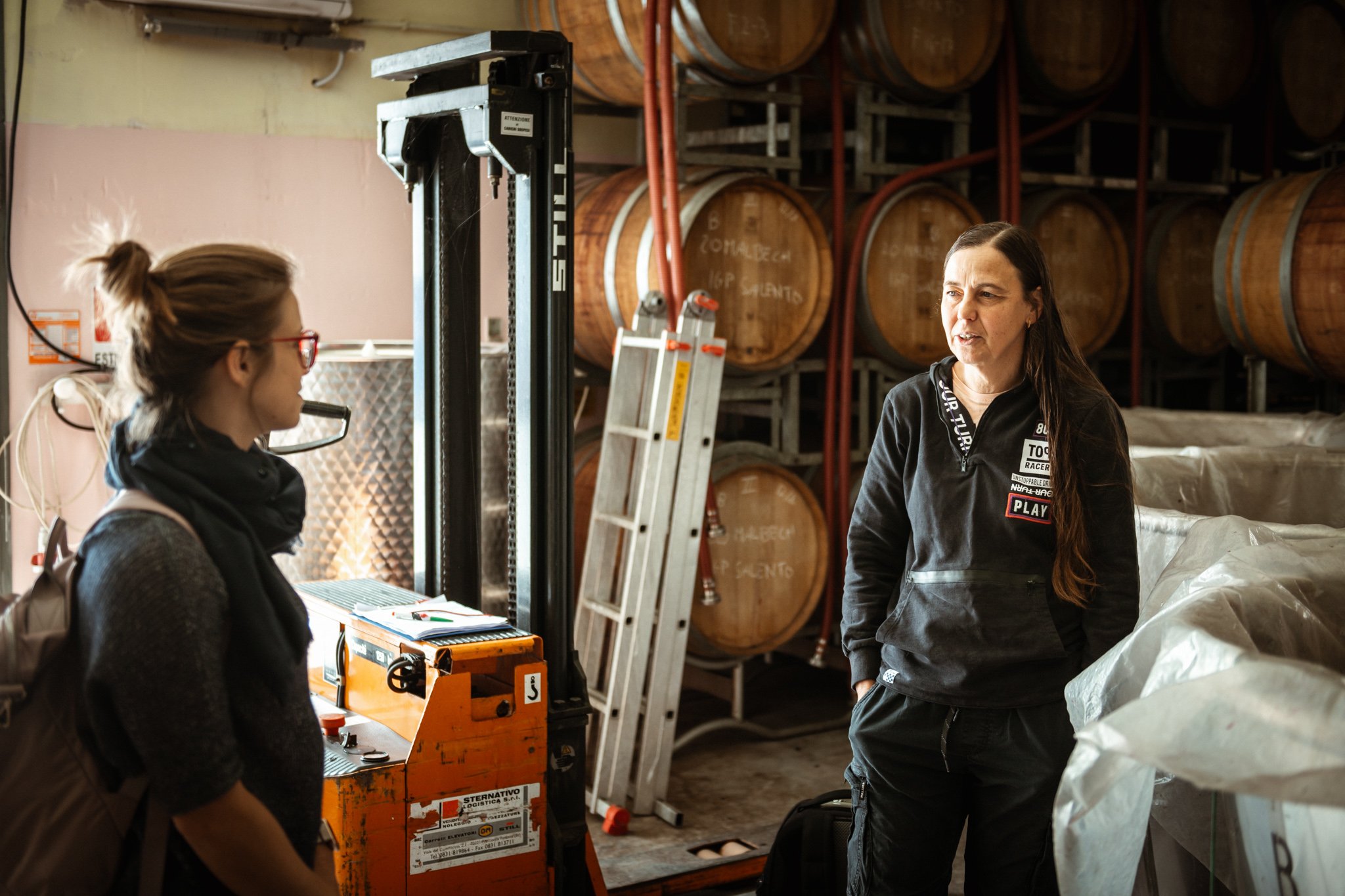


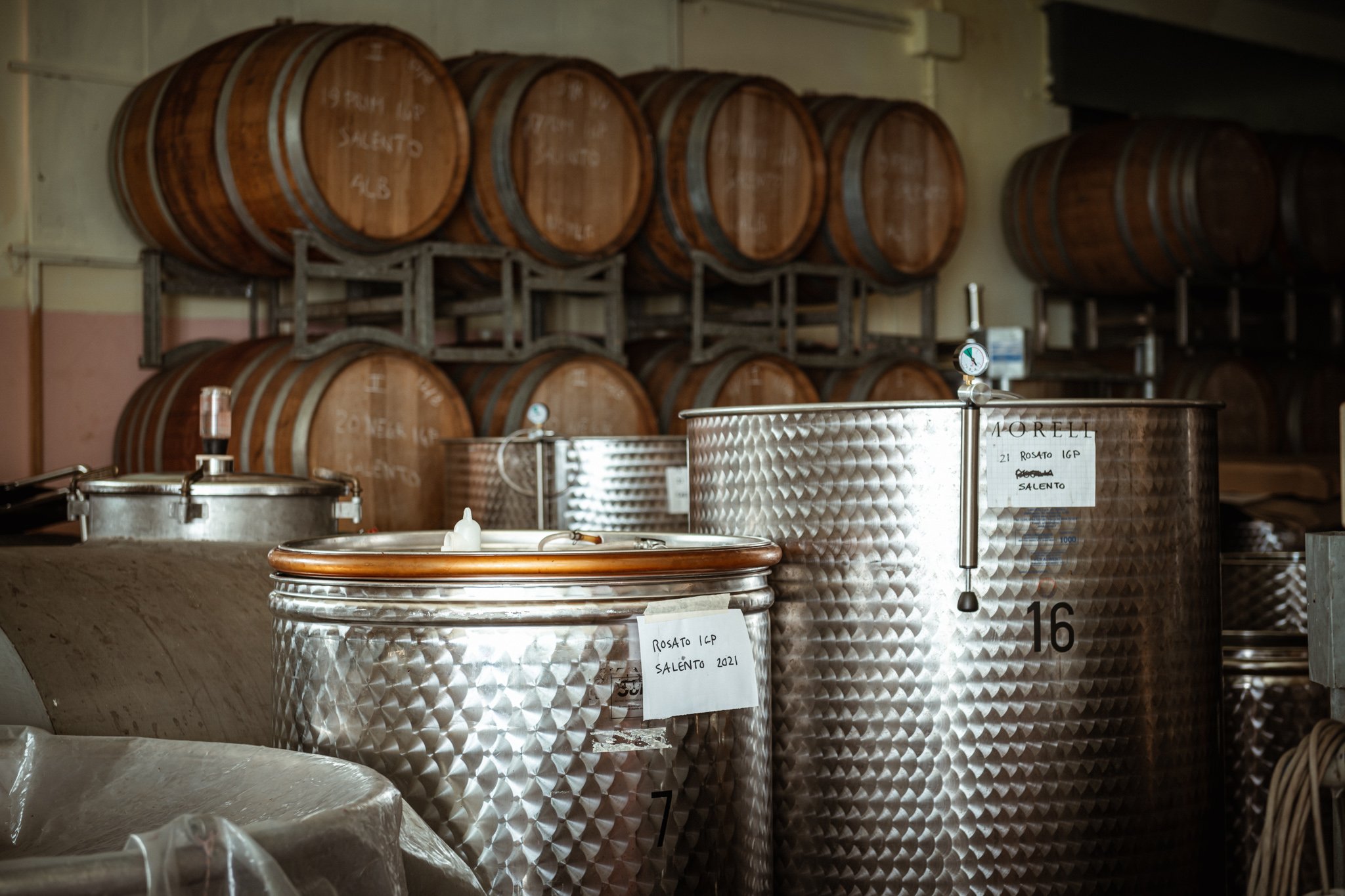
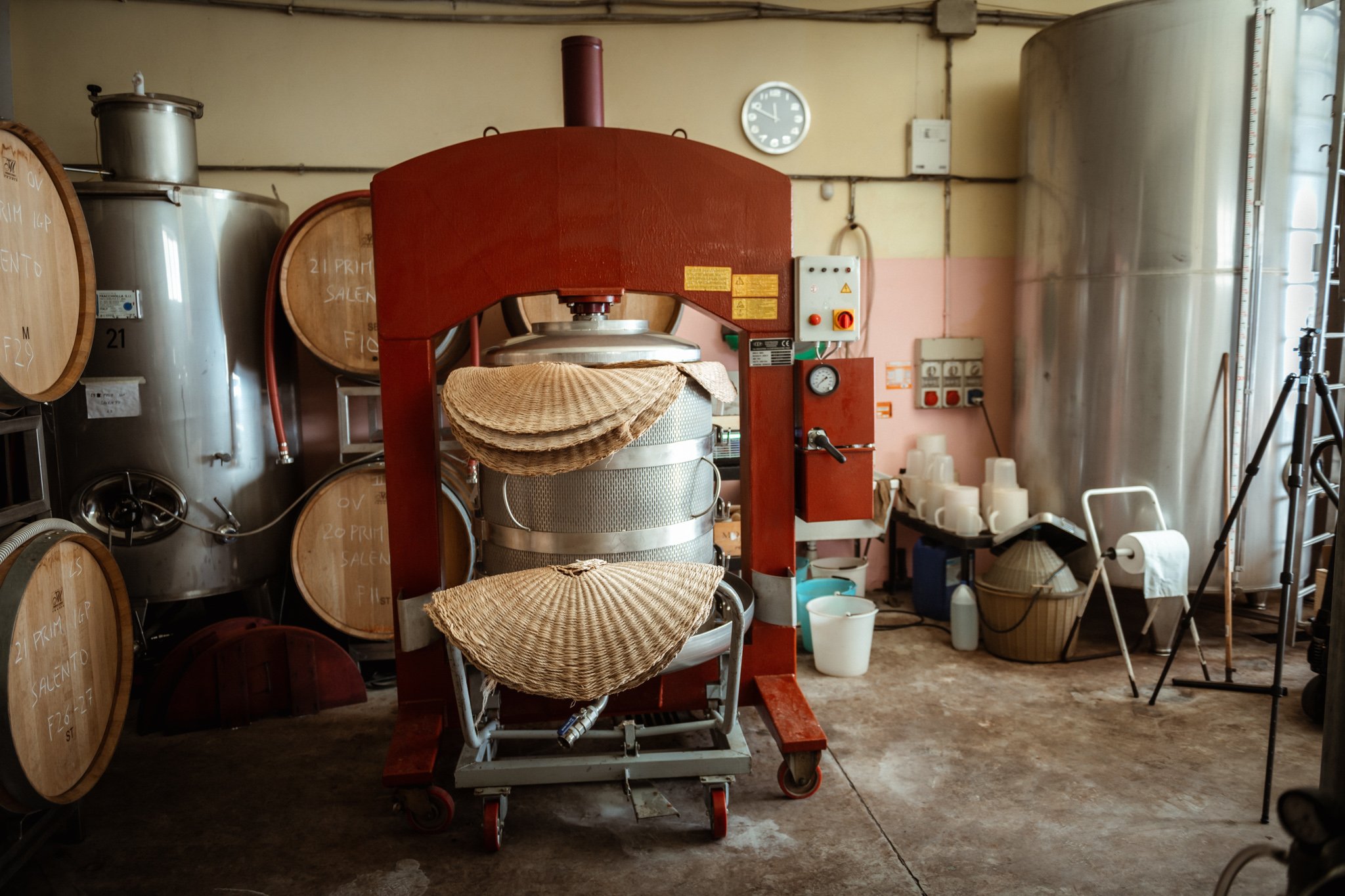
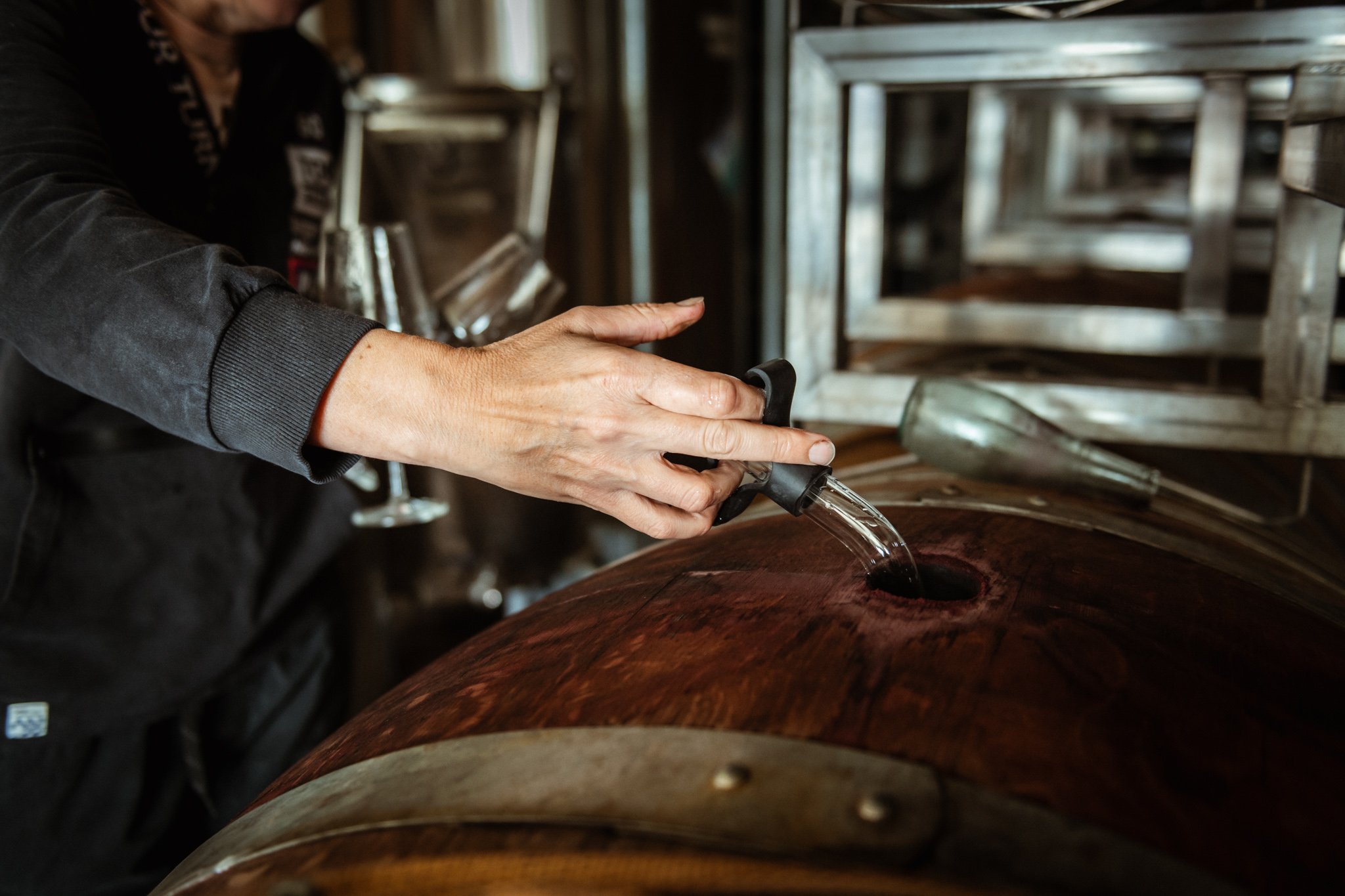
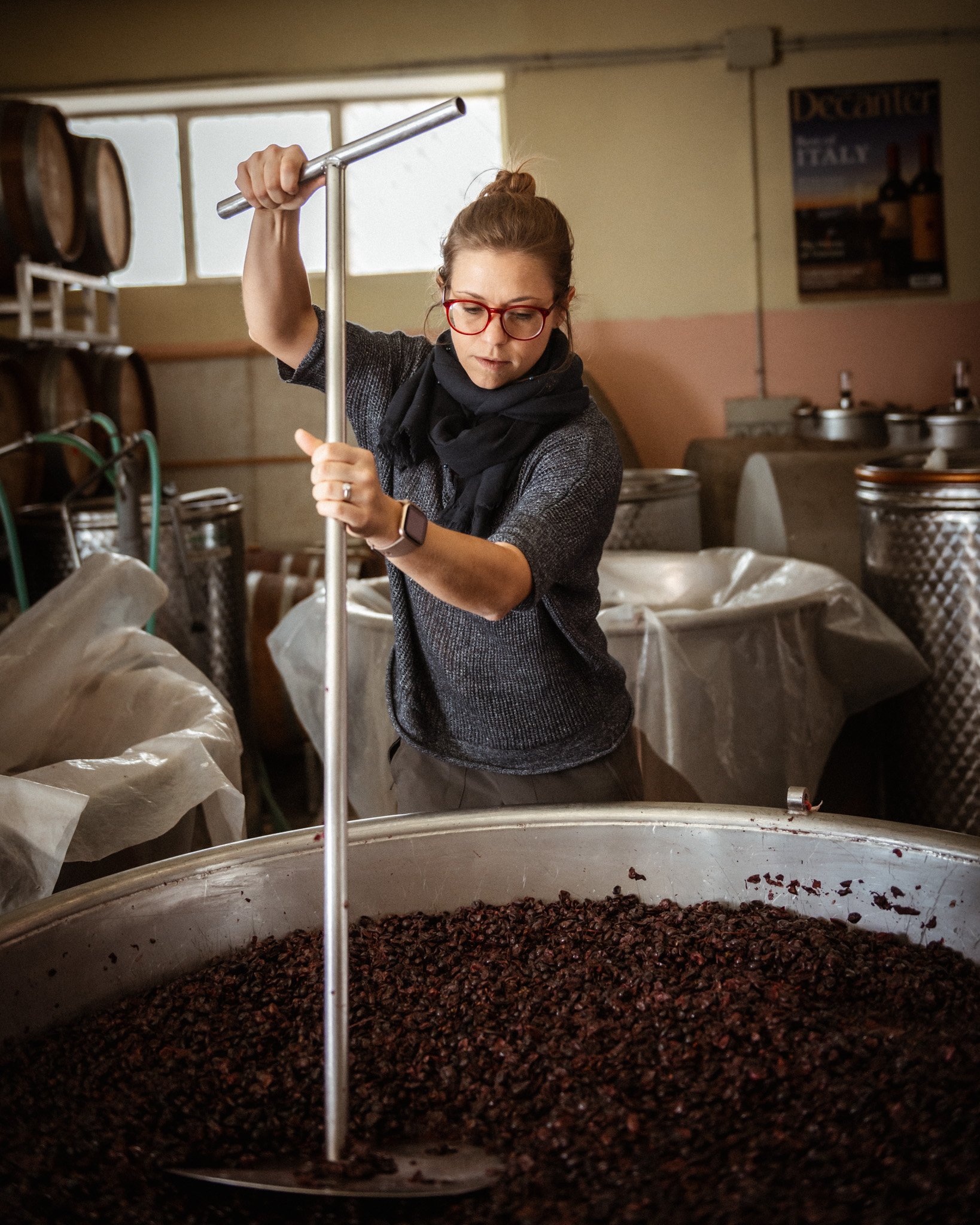
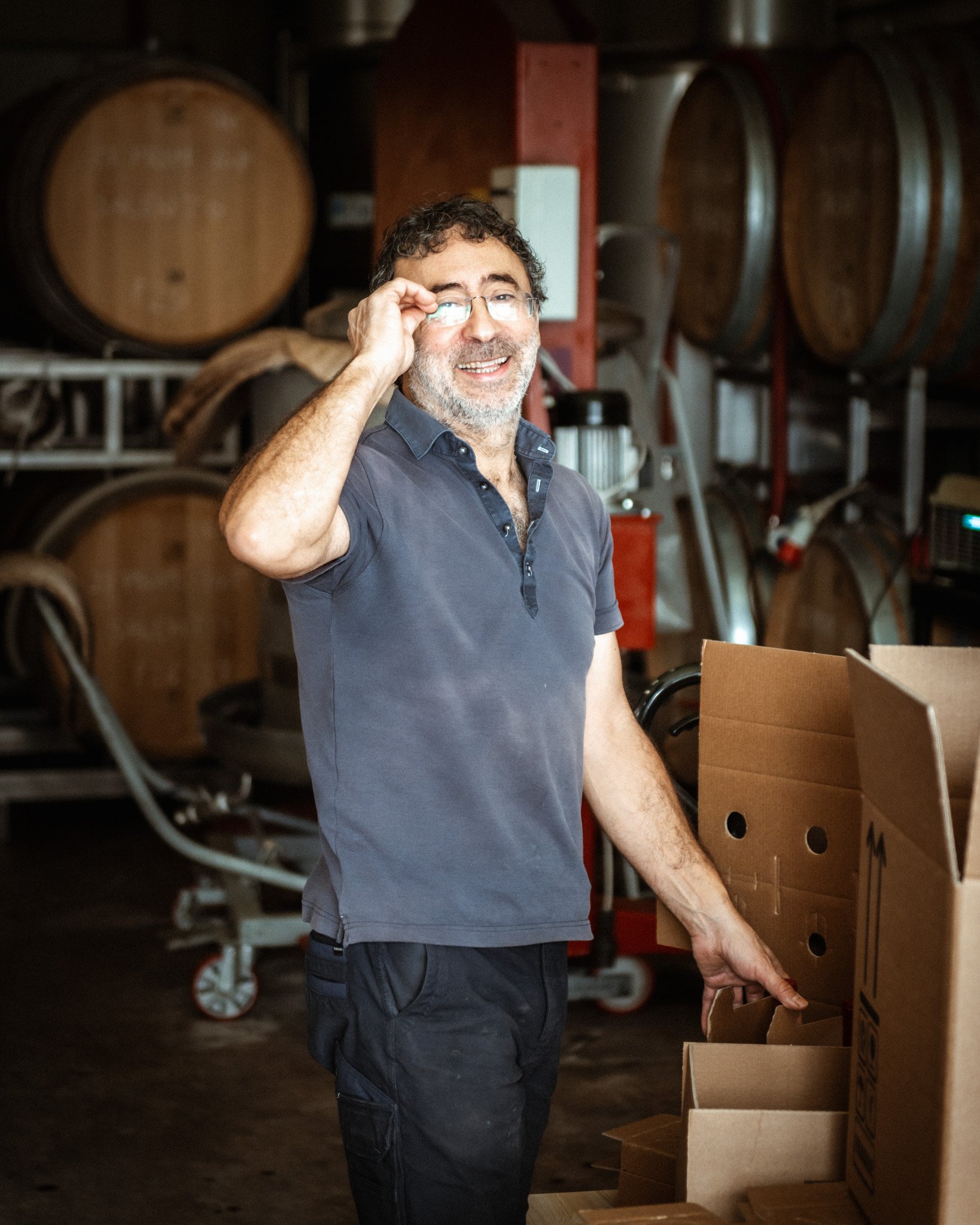
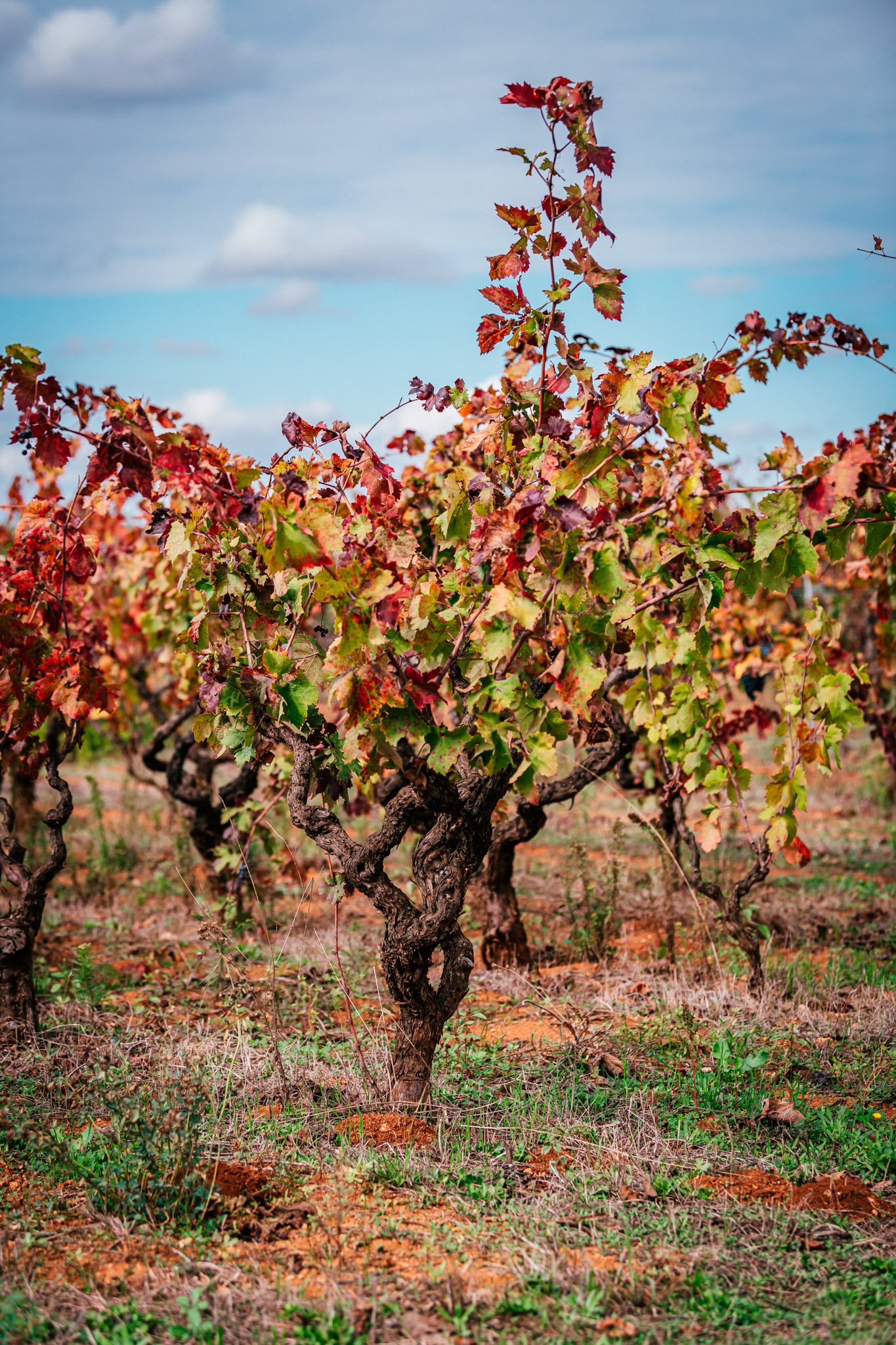
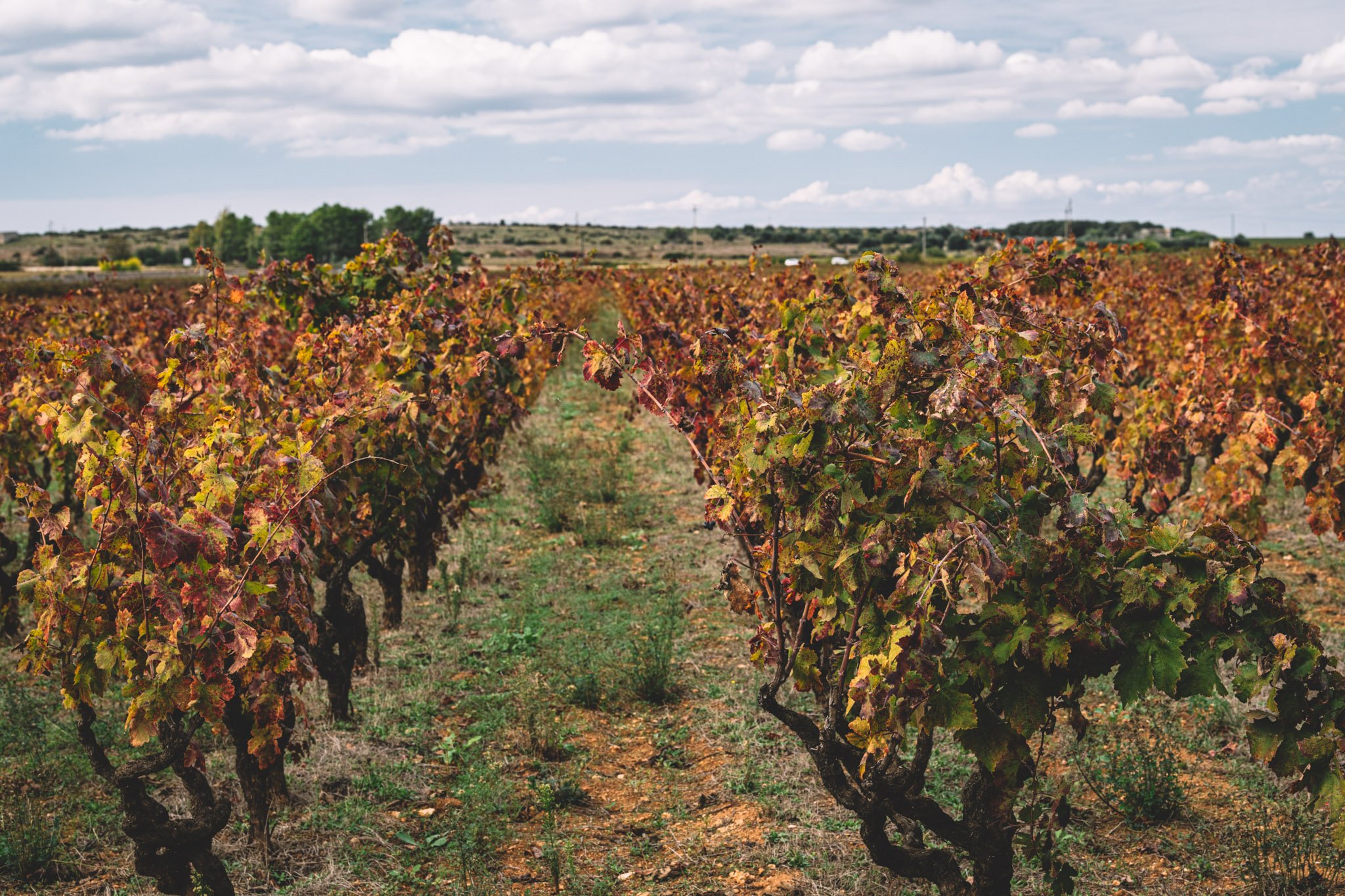
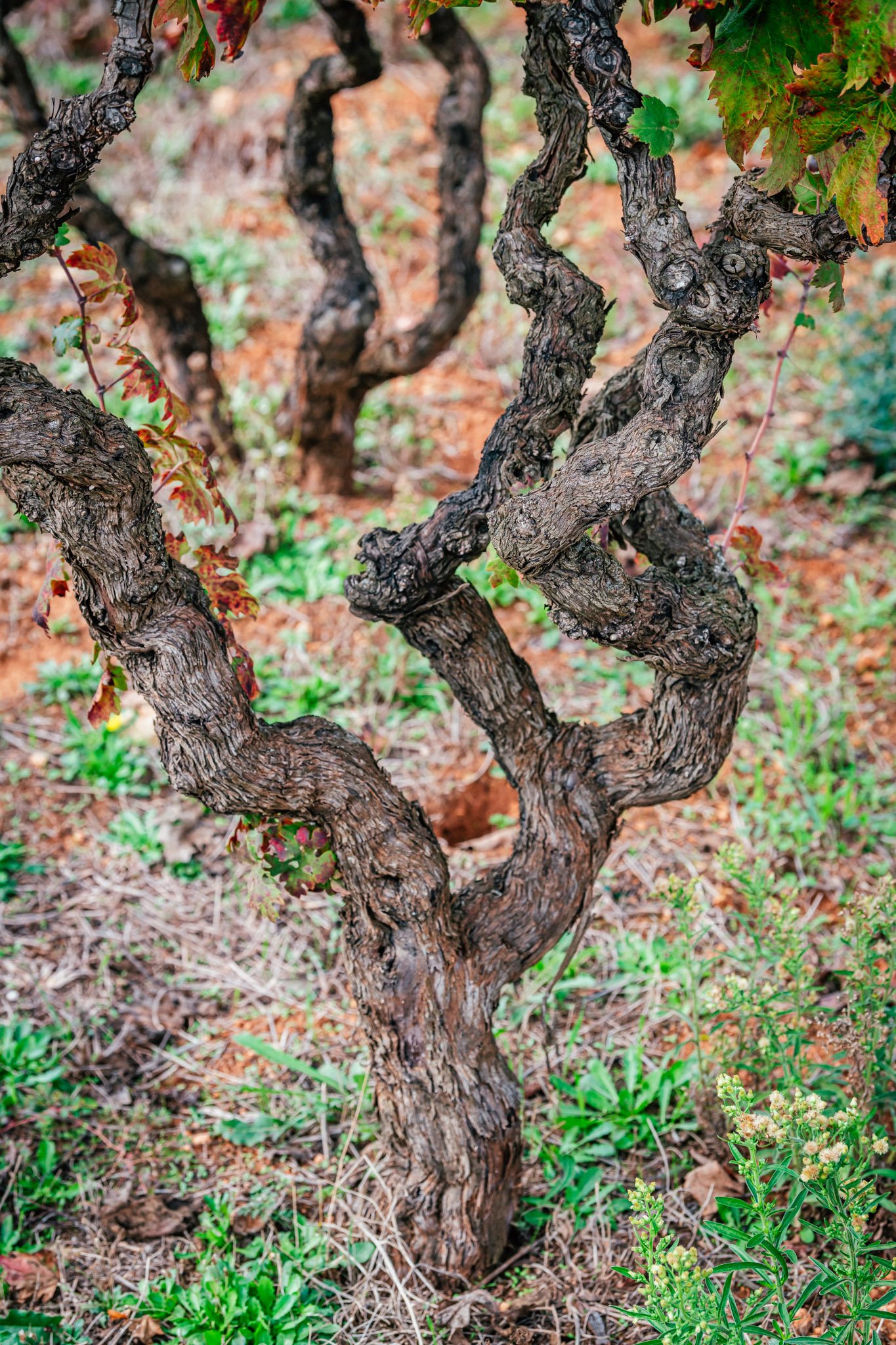

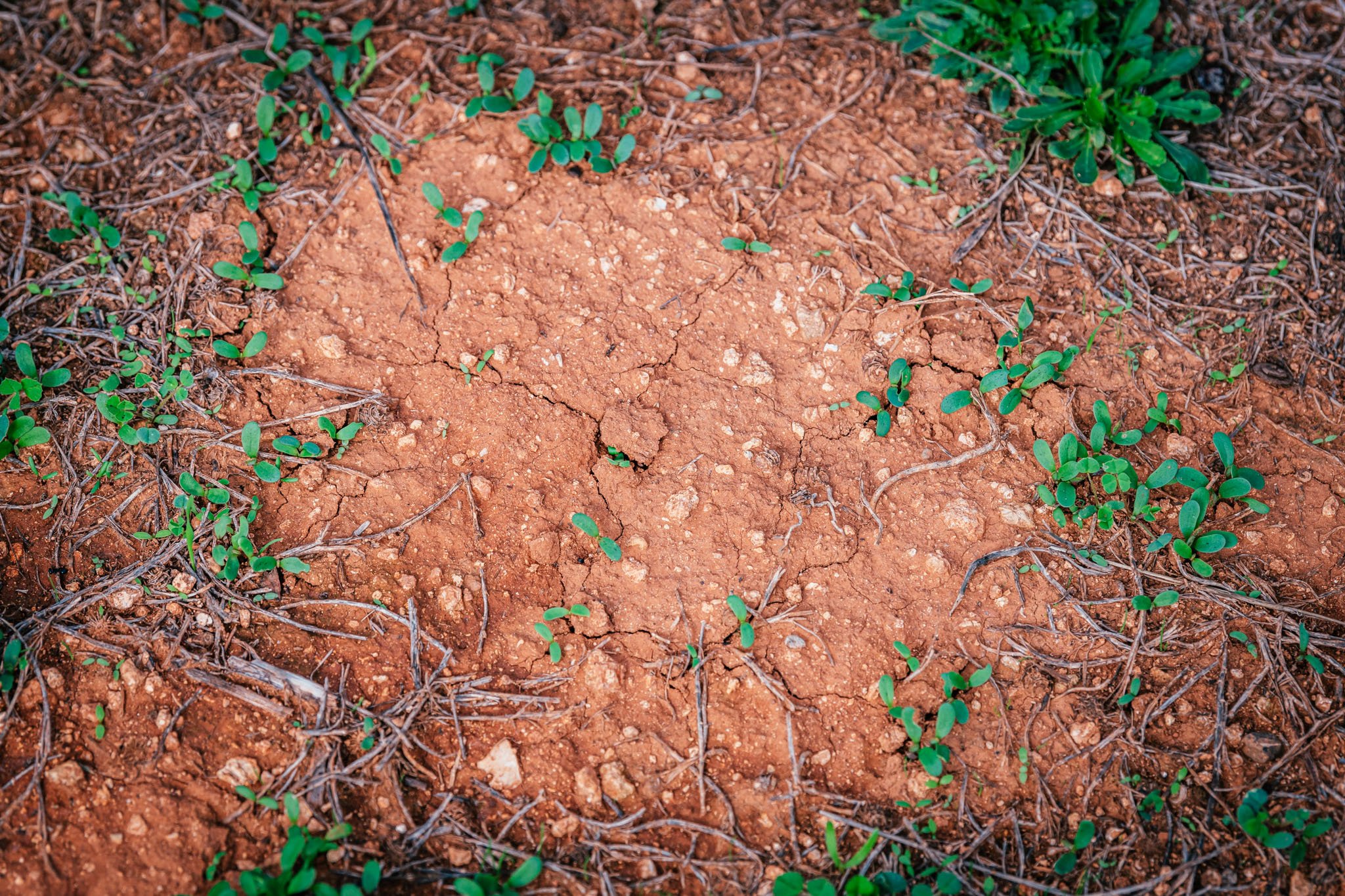
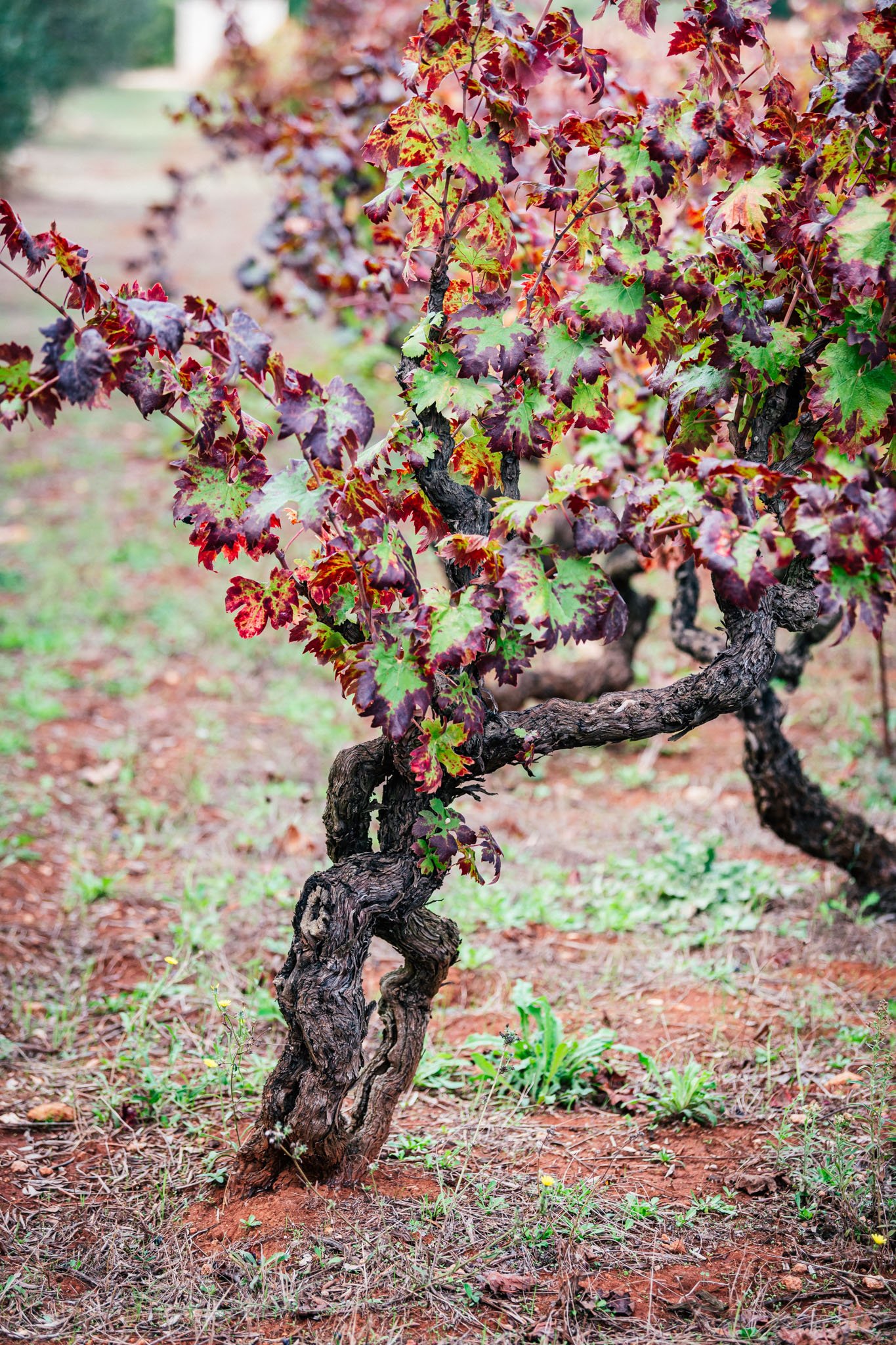
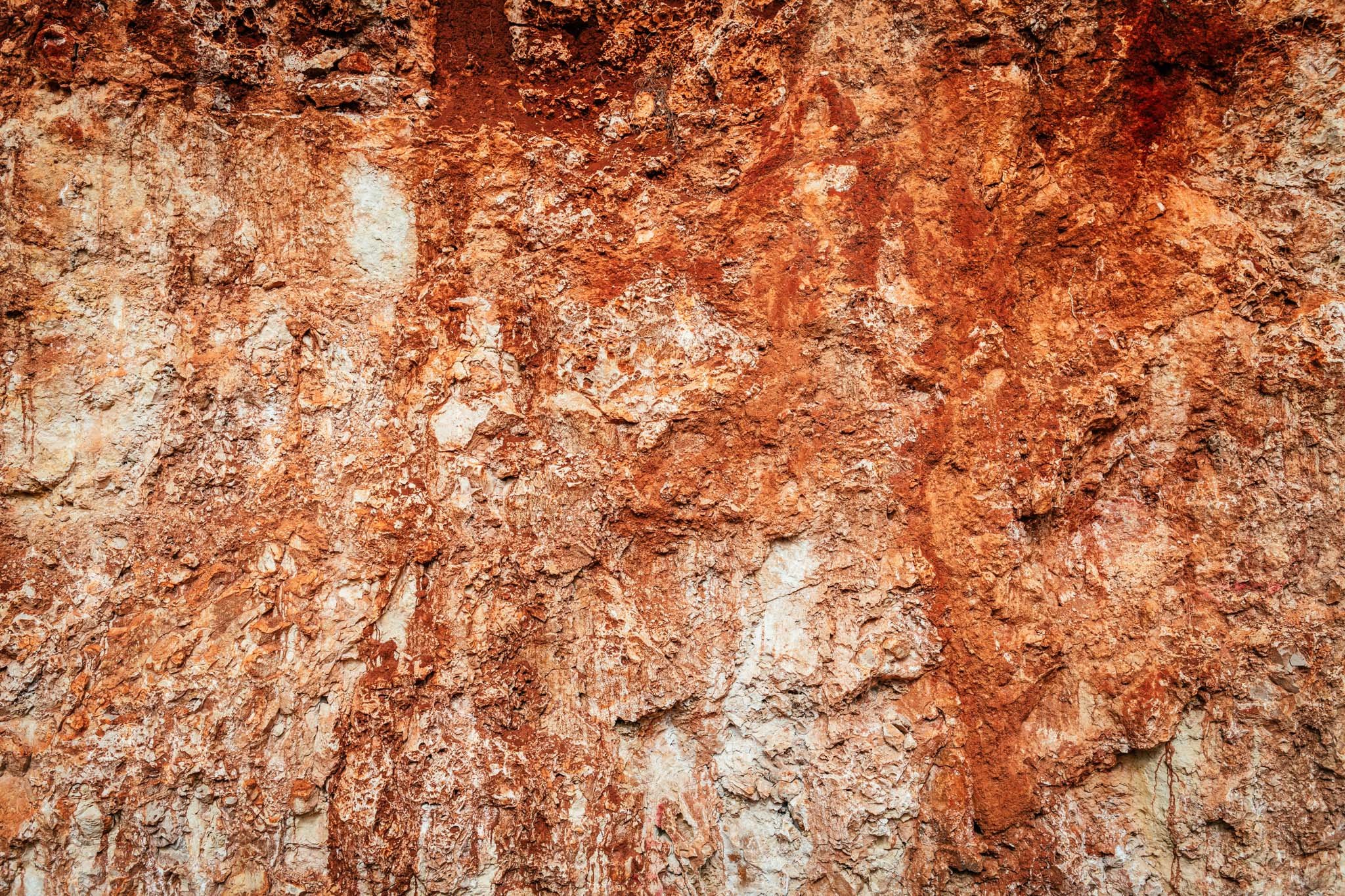
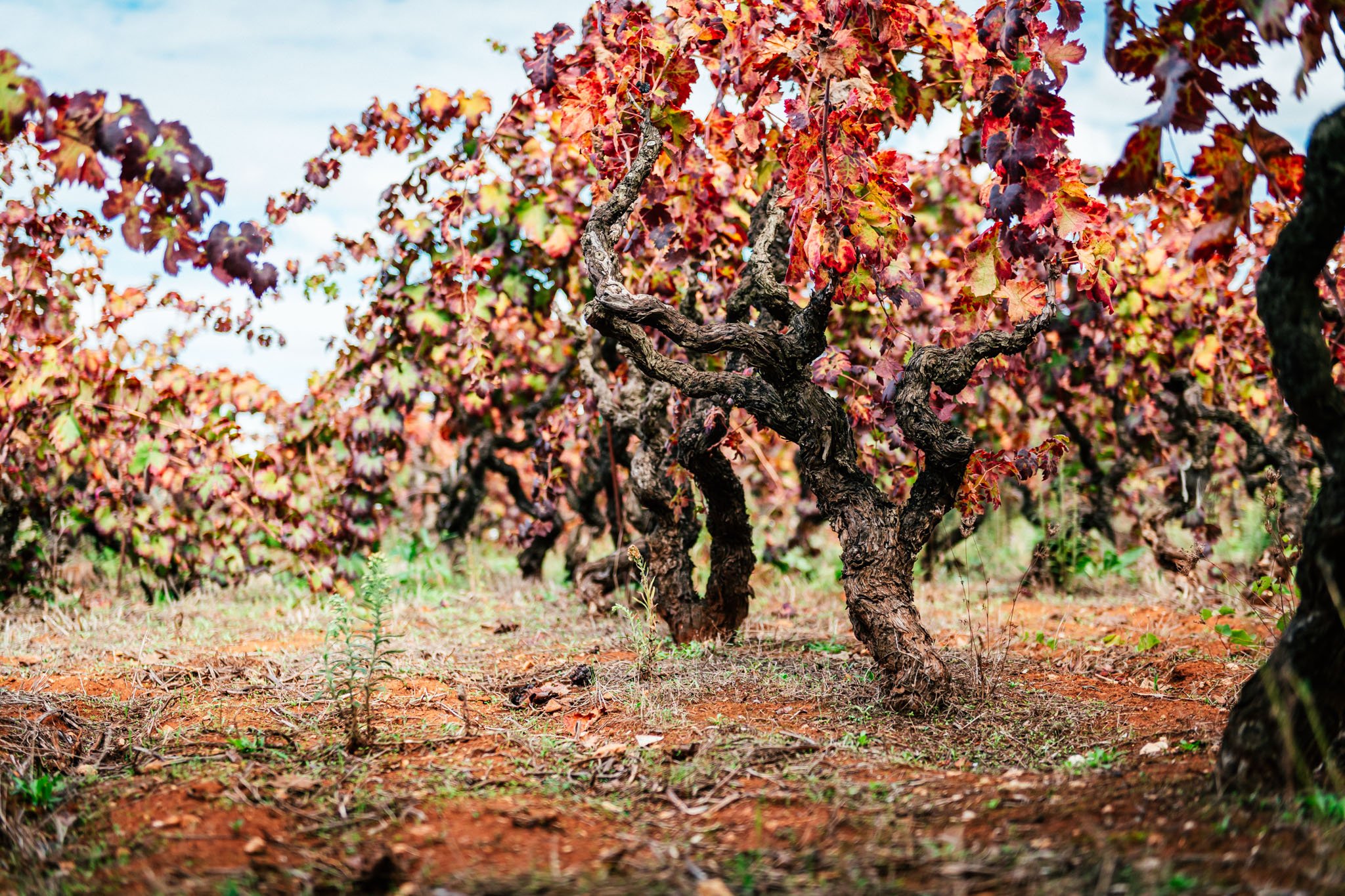
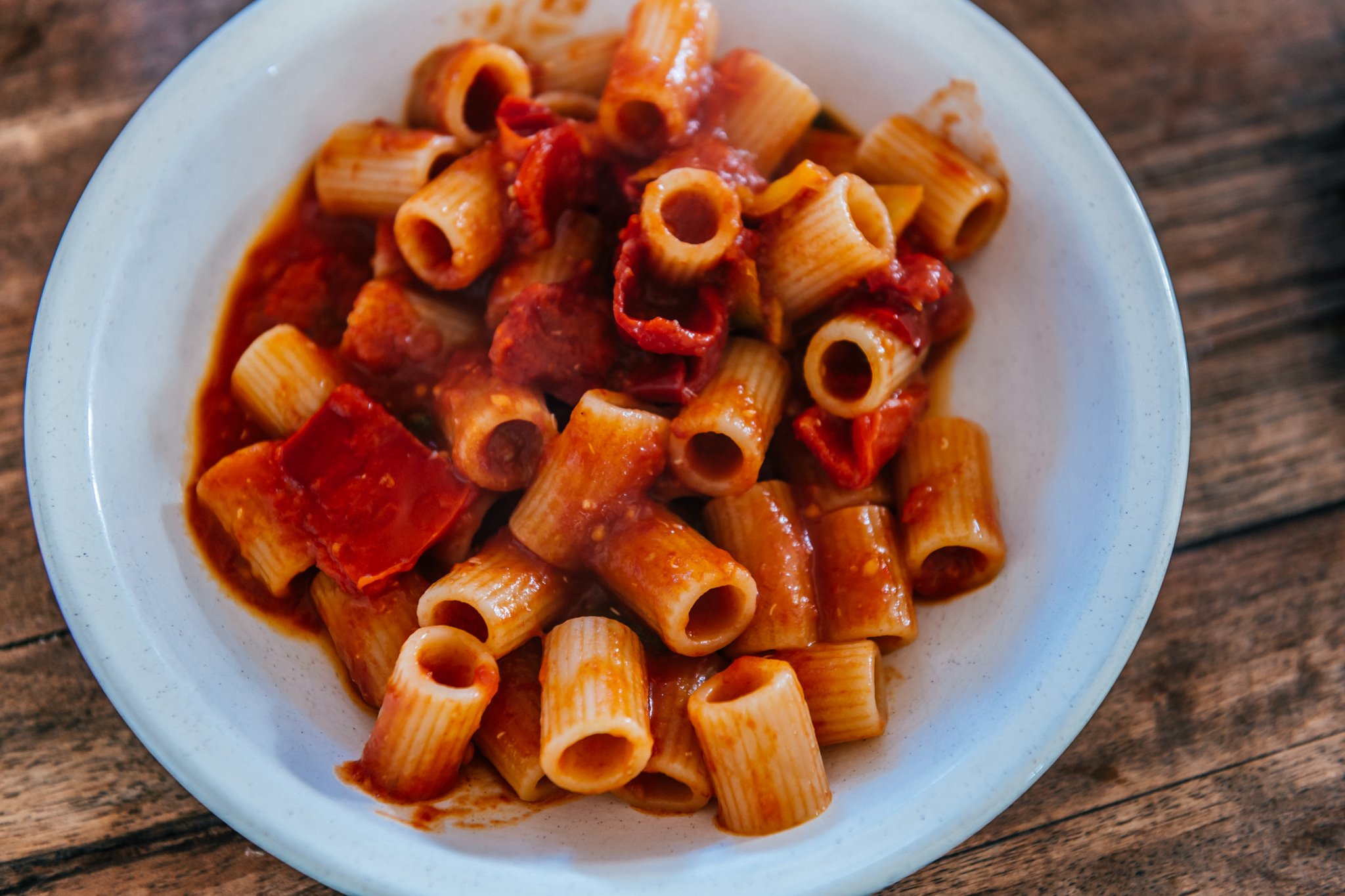
MORELLA
Who: Lisa Gilbee
Where: Manduria (Puglia, Italy)
What grapes: Primitivo, Negroamaro, Fiano, Viognier, small amounts of Petite Verdot, Cabernet, Malbec
Key facts: This biodynamic estate is farming very old bush vine Primitivo in an effort to preserve and grow interest in a disappearing form of local agriculture.
Website: http://www.morellavini.com
Instagram: @morellavini
Morella “un mese e mezzo” Bianco Salento IGP
Viticulture: Organic / Biodynamic
Soil type: Terre Rosse: Red sandy clay over limestone with lots of quartz particles
Elevation: 80m
Grapes: Viognier
Method of fermentation: The Mese e un Mezzo is aged on the skins for a month and a half, as the name implies. Lisa uses cement eggs for the fermentation. With this wine Morella is showing that you can make a skin-contact white that is clean and transmits terroir as much as it does winemaking technique.
Morella “Mezzogiorno” Bianco Salento IGP
Viticulture: Organic / Biodynamic
Soil type: Terre Rosse: Red sandy clay over limestone with lots of quartz particles
Elevation: 80m
Grapes: Fiano
Method of fermentation: Handpicked and chilled overnight. Bunches pressed whole in basket press. Half fermented in large oak barrels and half in stainless steel. Stirred on the lees for seven months and lightly filtered before bottling.
Bottles Produced: 5000
Light citrus. Stone. Sea. Lisa Gilbee grows Fiano di Avellino in Manduria, a few kilometers from the gulf of Taranto. I love the quiet beaches populated by scattered local tourists and the low intensity tourist towns of this coastline. Sleepy in a really nice way. Still a real place. Serve Mezzogiorno with lightly battered-and-fried whole fresh sardines. — JM
Morella “Mezzarosa” Rosato
Organic: Organic / Biodynamic
Soil type: Terre Rosse: Red sandy clay over limestone with lots of quartz particles
Elevation: 80m
Grapes: 70% Negroamaro, 30% Primitivo
Method of fermentation: Hand harvested, cooled overnight, destemmed and soaked for 5 hours. No enzymes are used. The fermentation happens slowly over the winter months while the wine rests on its lees.
Bottles Produced: 4000
Rosehip. Hibiscus. Chalk. This Negroamaro/Primitivo blend is finer and lighter than you’d expect from a pink wine made from two of Puglia’s irrepressible red varieties. The fresh style of Mezzarosa is welcome in Manduria’s warm climate, and in ours. Serve it with whole fried rockfish garnished with purple basil, raita, and dabs of chili paste. — JM
Morella “Mezzanotte” Primitivo Tarantino IGP
Viticulture: Organic / Biodynamic
Soil type: Sandy clay over limestone.
Elevation: 3km from the Ionian sea.
Grapes: 100% Primitivo
Method of fermentation: Destemmed into open small fermenters. Hand-plunged, crushed using a basket press, aged in old barrel. Unfiltered.
Bottles made: 5000
Pepper. Herb. Cassis. There is exceptional freshness to Morella’s full-bodied, ripe reds. It comes from biodynamic farming, understanding the necessity of positive energy and real work in the fields, and from cultivating heirloom vines that articulate the timeless character of Manduria. Drink Mezzanotte with oxtail tagine, baba ganoush, and crispy, fatty chapati. — JM
Morella Malbek Primitivo Salento IGP
Organic: Organic / Biodynamic
Soil type: Terre Rosse: Red sandy clay over limestone with lots of quartz particles
Elevation: 80m
Grapes: 55% Malbek, 45% Primitivo (40 year old vines)
Method of fermentation: Hand harvested into small boxes. Fermentation in small open vats, with hand plunging and temperature control at 25o C. Traditional basket soft pressing. Matured in french 300L barriques for 10 months. Matured in bottle for a minimum of 5 months.
Cherry. Mint. Plum. Savory meaty intensity. There’s a strong argument for substance and framework being made by this unique Franco-Italian blend. Lisa is combining two worlds. She uses a small basket press to crush the grapes, and ages them in French barrique. I like the mid-weight+ velvety texture. Bring on some chilly evenings! — JM
Morella Negroamaro-Primitivo Salento IGP
Viticulture: Organic / Biodynamic
Soil type: Terre Rosse: Red sandy clay over limestone with lots of quartz particles
Elevation: 80m
Grapes: 60% Negroamaro & 40% Primitivo (40 year-old vines)
Method of fermentation: Hand harvested in to small baskets and fermented at 28 degrees Celsius. Aged in Allier oak barrels for 12 months, and then an additional 8 months in bottle before release.
Bottles Produced: 5000
Morella “Old Vines” Primitivo IGP
Organic: Organic / Biodynamic
Soil type: Terre Rosse: Red sandy clay over limestone with lots of quartz particles
Elevation: 80m
Grapes: Primitivo (Medium vine age: 75 years, maximum yield of 35 ql per hectare.)
Method of fermentation: Hand harvested into small boxes. Fermentation in small open vats, with hand plunging and temperature control at 28o C. Traditional basket soft pressing. Matured in new french barriques for 14 months. Matured in bottle for a minimum of 18 months.
Bottles Produced: 3500
Morella “La Signora” Primitivo
Organic: Organic / Biodynamic
Soil type: Terre Rosse: Red sandy clay over limestone with lots of quartz particles
Elevation: 80m
Grapes: Primitivo. (Medium vine age: 55 years. Average yield 35 ql per hectare.)
Method of fermentation: Hand harvested into small boxes. Fermentation in small open vats, with hand plunging and temperature control at 28o C. Traditional basket soft pressing. Matured in new french barriques for 12 months. Matured in bottle for a minimum of 24 months.
Bottles Produced: 2500
Wild cherry. Rosemary. Clove. Twisted old bush vines surrounding Lisa’s home are the reason for the singular character of La Signora. Half-century old parcels, biodynamic farming, adept winemaking. Saving these vines from eradication and replacement is at the heart of her work. Only 10 six-packs are available: don’t miss it. — JM
Lisa Gilbee has lived in Manduria for 12 years. She is Australian, married to an Italian. They have two young kids. She travels around the world making wine for other people, and also makes wine for a large Puglian winery. But Manduria is home, close to the seas, where they can make wine the way she wants.
Their logo is a picture of an owl statue made from local sandstone. They chose it because the owl observes, watches. It’s how Gilbee wants to farm. “We started by developing natural grasses in the vineyard, then we took out all the pesticides, and eventually got to just using copper and sulfur. Now we have moved to biodynamics.” Their methodology is slow, deliberate progress toward a lofty goal.
Traditionally in Manduria, wines were made really manually: foot stomping of grapes before fermentation, back-breaking pruning of low-trained bush vines, virtually no mechanization in most fields even until World War II. Poor sharecroppers farmed small parcels and could not afford the machinery, the feudal system funneled too much of their harvest into the pockets of local landed aristocracy. Then, after World War II these old techniques of by-hand wine making virtually disappeared. In the 20th century production shifted almost entirely to the Cantina Sociale: wine made with BIG equipment. Bulk wine shipped to pump up the alcohol by volume of thin northern Italian reds, and then headed to supermarket chains at bottom shelf prices. Today 90% of the area’s production goes to the Cantina Sociale.
“I’d rather we focus on being a small producer turning our own vineyard into wine,” Gilbee said.
Morella has non-nursery, antique clones in its 10 ha of bush vines. There’s lots of genetic diversity in Gilbee’s monopole because the parcel was planted over time by a variety of farmers. Bush vines like Lisa’s may yield 2 – 2 ½ tons per hectare, trellised conventional vines can produce three times that amount. So slowly the old bush vines are abandoned or removed and replaced with modern clones, in fields designed to work by machine. The fields become easier to work, bulk volume increases and maybe income increases, but the connection to a traditional type of Puglian viticulture disappears.
Lisa clearly likes it here. While she laments the lack of investment in truly studying and understanding Primitivo in the way, say, Barbera is analyzed in the north, she wants to stay, to protect these old vines. They have an indomitable natural resource in Puglia. The region still makes more wine than all of Australia, and many fields of incredible century-old bush vines (and centuries old olive trees) still stand as mute guardians of the region’s real wealth and value.
The wines:
Morella’s wines are bottled without pumping and without filtration. They use a cement egg for some of the wines. The vessel keeps the lees constantly in movement, and is a hallmark gadget among biodynamic enthusiasts.
Mezzanotte rosso is a mainly Primitivo blend. Small bits of Negroamaro, Malbec, Cabernet and Petite Verdot are co-fermented with the Primitivo. The wine has nice bones to it and merited several exclamatory emoticons in the margins of my tasting book. Malbec has been grown in Puglia for 100 years according to Gilbee. It was replanted post-Phylloxera because of interest from the Bordeaux wine market.
The estate’s Primitivo/Negroamaro blend was my personal favorite red on the day of my visit. These are the two main grapes of the Salento. Primitivo ripens at the end of August, while Negroamaro does not ripen until the end of September or early October. This wine is grown in terre rosse clay-rich soils, and came after a drought year.
Without a doubt we’ll one day bring Morella’s 80-year-old vine Primitivo to the States. It was lovely, with a shade more blue fruit in comparison to the Primitivo/Negroamaro blend. Full and round. Ditto for the Primitivo La Signora from a different clone that Gilbee also makes. I found the latter wine more aromatically interesting, with a hint of sweet raisiny fruit above all the brawny ripeness.
Of course all these wines taste amazing at lunch in the family’s home, sharing pasta and sauce made with spicy local peppers with Lisa’s husband and her kids, Matilda and Anton. The school-age duo eye me with suspicion, but I think they warmed up a little to the strange American dressed in too-warm clothes by the end of my stay. It was raining, and leaving the happy family to trek north was unappealing. Now that we see the Morella wines also taste great in the dining rooms of our North Carolina homes, I can begin to plan a repeat visit. Primitivo is so essentially Italian-American, great with the way we eat, our bold spectrum of sweet-spicy-hot-meaty flavors.
Where was I mentally on my last day in Puglia? I felt inspired. I felt physically great, running through infinite landscapes of olive and plum and pomegranate had brought me into a vivid present tense. All the pasta was working miracles. Isolation in an empty 16th century farmhouse provided focus and loneliness in equal parts. A next-to-last day loomed. I would traverse mountains in Campania, to see a few places at the 11th hour. Traveling south from Rome, I made off-the-cuff appointments on a hunch and a recommendation, doubling down on the power of luck and chance.
A lack of bravery extended my southern excursion to Morella. Manduria isn’t the easiest place to reach. After an alternatingly drab and gorgeous drive from Trani to Bari to Taranto, highways gave way to two-lane roads through busy small towns, red lights and potholes: a slog. Malfunctioning GPS took me to a fish market on a one-way road only 100 street numbers from the actual cellar, close but simultaneously inscrutably far from our meeting point. I wove through a warren of stone-walled side streets and narrow unidirectional alleys to find the actual spot… but Lisa had split. Her mum was at the farm from Queensland, and it was time for lunch. I was late.
Armed with compass coordinates, I set out to find Lisa and Gaetano’s house in the hinterlands. Their street has no name and no sign. At least twice I parked at the end of it, and peered down a dusty gravel expanse, with no appreciable visible structures to the horizon. I circled. I went down a couple of incorrect long driveways. Eventually I grew a spine, and set off down the right road. Their new house is located a mile or two through the olive trees and bush vines. It seamlessly combines new construction with very old stone stables. Lisa said there are still artisans active in her area that build houses using centuries-old methods. The mason she employed didn’t use any power tools to cut and build her stone home. It’s a beautiful multi-story place with a panoramic view of the landscape to the sea(s.) On a clear day Lisa has spotted the mountains of Basilicata, across the water to the west.
I like the linguistics of English speakers from faraway places. To my ear Lisa makes quirky word choices. It could be her Anglophone isolation, an Australian living in Puglia who speaks Italian most hours of her days. But Lisa is a character. Her syntax and florid vocabulary could stem from individuality alone. I like that she says groovy a lot. I like that her vocal intonations are in a register I associate with positivity, even when she’s talking about the terrible job done by their trash collector, or the hegemonic power of crop science corporations.
Lisa and Gaetano have been buying vineyards. They have 12 hectares of bush vines now, on 18 hectares of land. Manduria is drier than most of Puglia. During harvest 2016, average rainfall in the larger region was 200ml. Morella received 100ml. Rainfall in Manduria this year was 2/3 of the town’s average total.
Morella is certified biodynamic. “Biodynamics is about looking after the workers,” Lisa said. The farm is 70 meters above sea level, and surrounded by water at a distance of only a few kilometers. They are on the “instep” of the boot. “We are living here to make better grapes.” They hope to build a new winery on the same gravel road in the next year. Lisa likes to stand on her rooftop and watch fog roll in with the sirocco winds from the south. Because of the peculiar shape of the land and water surrounding Manduria, the fog bends in odd patterns, passing the vineyards by initially, before flowing back to the farm from the north.
Manduria is a warm place. Primitivo is well-suited to its local mesoclimate. Average temperature here in summer is 30 degrees Celsius. Dry winds form the north can quickly reduce humidity in the vineyards by up to 45%. “Wind is the dominant thing here,” Lisa says.
The wines show this regional warmth in their ripeness. Because of Lisa’s work in the cellar and perspective on quality wine (she has friends in many wine regions) the Primitivos at Morella are also dry. It is common in the region to encounter sweet versions, often made sweet post-fermentation.
We took a walk through their fields after our tasting. It was the right way to end a week of working in Puglia. The diverse sub-plots of vines were striking. It’s easy to notice where one old farmer’s work ended, and another’s began. Lisa’s a great guide: quick-witted, funny, thoughtful and opinionated. She has a global perspective on the challenges facing farmers in her new locale. We talked at length about the reasons why natural wine has resonance in this area. “By the 80’s fermentation in Puglia had changed. People had very little involvement (in the process.) They made wine… and waited for the E.U. to distill it.”
“Technology took hold, via big wineries. Yeasts, autofermenters, temperature control: they got control of fermentation, but in a sterile way.”
But awareness of a different path was only dormant. “Before the 80’s, everyone made wine at home. There was great knowledge, and courage. The wines were volatile, often bad.”
Hence, the seeds of the local natural wine movement. “We can start a new era, with a traditional point of view. Small winemakers today can depart from the point of view of the home winemaker, it’s what people in their families used to do anyway.” Lisa believes this is the reason Italy is such a source of adopters of natural winemaking. “People here used to make tons of Pet Nat wines, even. That would often explode….” Petillant Naturel wines are fashionable in natural wine circles. They are sparkling wine bottled before the secondary fermentation is finished, without the addition of yeasts or sugars. With the assistance of talented oenologists like Lisa, stable and tasty wines made on a human scale can become a part of the area’s future.
I left. The sun was already low in the sky. My drive north became dreamy radiant orange port towns, and painful westward squinting. Today, as I multitask hopscotch, and chalk drawings of bugs and flowers with my sunny three-year-old, I strain to remember the feel of that remote place. Windy. Arid. A little forlorn. Wild.








